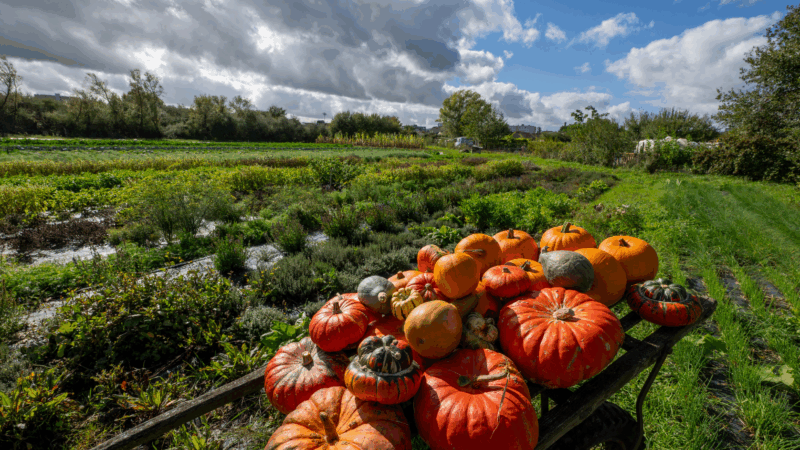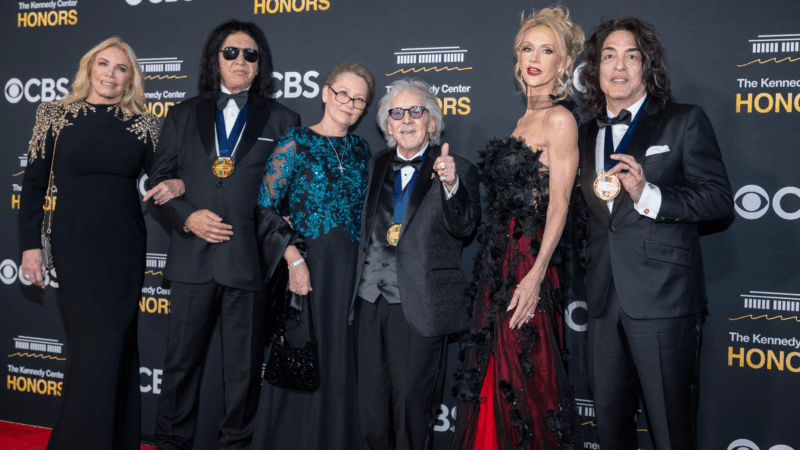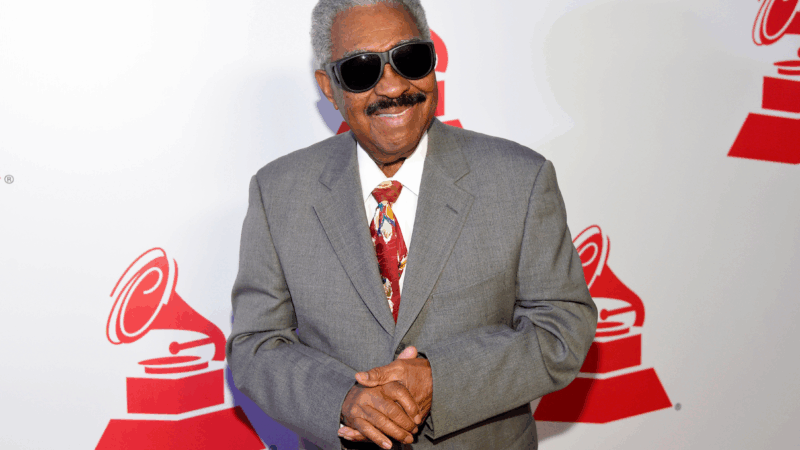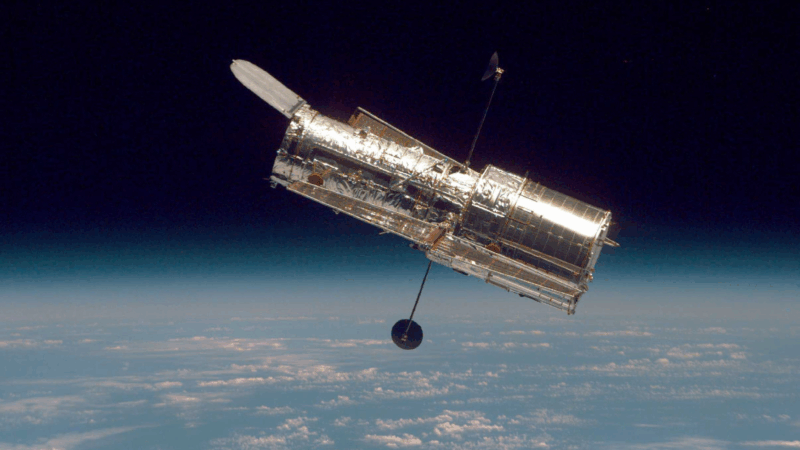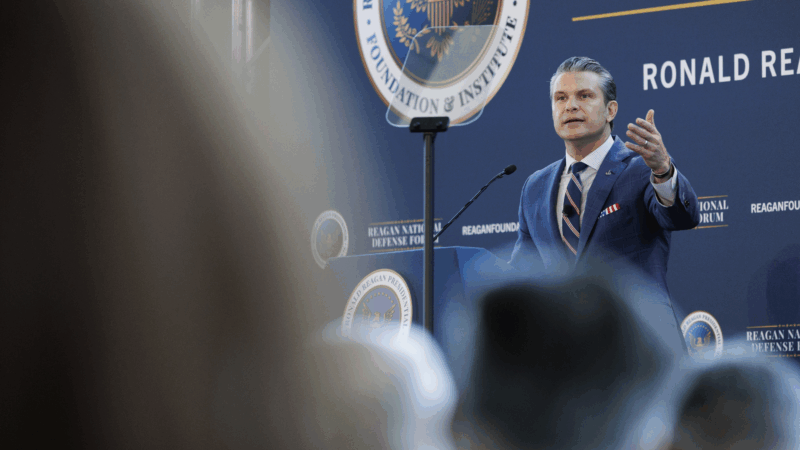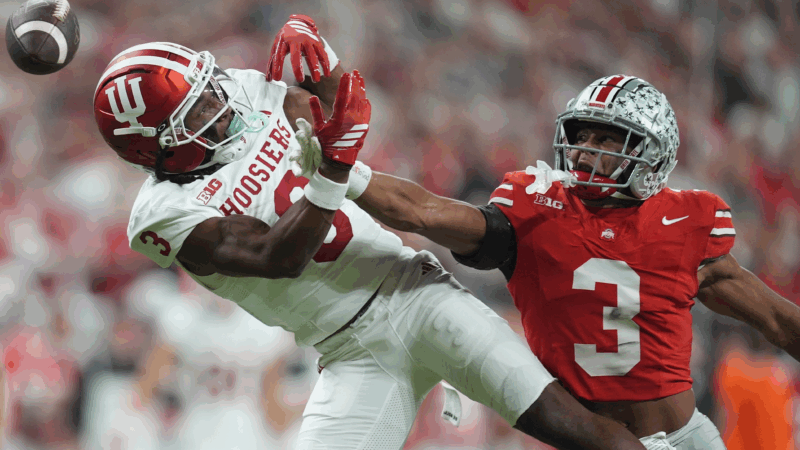Pumpkin: A favorite sign of fall, with a bit of shady history
Pumpkins are the bookends of autumn. Headlines about the arrival of pumpkin spice lattes signal summer’s end. And soon after the last bites of pumpkin pie at the Thanksgiving table, we turn to plans for winter holidays. In between, jack-o’-lanterns are the stars of Halloween.
The seasonal gourds also evoke a romanticized ideal of simpler times, according to Cindy Ott, author of Pumpkin: The Curious History of an American Icon.
“Pumpkins are more popular than ever,” Ott, an associate professor of history at the University of Delaware, tells NPR. “People are buying these things, even pumpkin spice lattes, because of these attachments, these very old-fashioned ideas about reverence of the small family farm.”
As her comment suggests, it wasn’t always like this. Like a gourd growing on a rambling vine, “pumpkin” took quite a circuitous path before it achieved PSL ubiquity. For this installment of Word of the Week, we follow the path.
Where did the word “pumpkin” come from?
The word “pumpkin” has long referred more to an idea than to a specific plant.
“Pumpkin itself isn’t exactly a botanical group,” says Logan Kistler, curator of archaeobotany and archaeogenomics at the Smithsonian National Museum of Natural History in Washington, D.C. “It’s more describing the shape of any kind of squash that people have bred to look like what we think of as pumpkins.”
The word “pumpkin” itself began with the Greek word pepon and evolved into the French pompon, according to Fiona McPherson, an executive editor with the Oxford English Dictionary. Pumpkin, she says, is a variant of “pompion,” an English word dating to the 1500s.
While the word’s roots are often linked to Europe, the plant’s roots are firmly in the Americas, with thousands of years of history.
“The first example that we have of ‘pumpkin’ is from 1647,” McPherson says, “apparently with reference to the poor diet of early settlers” in the New World.
When European settlers reached the present-day Americas, they encountered Indigenous people growing pumpkins — a useful source of food that’s easy to grow and can be stored in cold weather.
“Pumpkin was often used as a general term, similar to how the word “corn” once referred to any grain rather than to a specific foodstuff, says Ott.
“Pumpkins are part of this genus Cucurbita,” according to Kistler, who says the plants were farmed throughout North, Central and South America. “In precolonial times, Indigenous people in the Americas domesticated different types of these sort of pumpkin precursors at least six different times. So, there’s what we recognize as pumpkins originating all throughout the Americas, going back as far as about 10,000 years in Mexico.”

Several of those species are easily found today, whether they’re being weighed at a state fair (Cucurbita maxima) or canned for baking (Cucurbita moschata).
While other plant names have persisted since then, McPherson says, “‘pumpkin’ is the word obviously that has taken over.”
Who are you calling a pumpkin?
Shortly after the word was first used in English, “pumpkin” became a way to throw shade.
“The most interesting part of calling people pumpkins is it’s been so consistent,” Ott says, citing paintings and stories dating back centuries. “For women, it’s often associated with their body.”
Pumpkin imagery was used to suggest that a woman is driven by her natural urges, “instead of being cerebral and mannerly,” Ott adds. “And for the man, it’s always been associated with his head — like an empty-headed person. [It’s] used for politicians for hundreds of years.”
For McPherson, the speed with which the word “pumpkin” became an insult is striking.
“It really did not take long for it to develop this figurative use,” she says, adding that by 1680, pumpkin was “applied contemptuously to a person who’s a bit conceited or self-important or stupid.”
A gourd becomes a symbol for a romanticized past
By the late 19th century, Ott says, the rehabilitation of the word “pumpkin” in language was underway. For one thing, it became a term of endearment to call kids pumpkins, she says. And around the same time, the pumpkin became a symbol of old-fashioned ways of living — a touchstone in poems and genre paintings as urbanization took hold in the United States.
“So Americans move out of the country, into the city, but they like to imagine themselves farmers at heart, many of them,” Ott says. “And a pumpkin has been a way to maintain those connections. So that’s when the pumpkin became the pumpkin. It’s a cultural history, and not a botanical one.”
Today, that history includes a twist. Descendants of the same pumpkins that once sustained Indigenous civilizations and early settlers are now supporting modern small-scale farmers, Ott says. Tapping into nostalgia for our agrarian past, farmers are putting pumpkins front and center as they turn their farms into what Ott calls “agrarian wonderlands” to draw visitors.
“The cool thing about the whole story,” she says, is that “these very romantic ideas and myths that a lot of Americans tell themselves about their origin stories are actually helping to rejuvenate the very thing it represents: a small family farm.”
Tributes, not politics, play center stage as Trump hosts the Kennedy Center Honors
President Trump said he was closely involved with picking the honorees, and on Sunday he became the first president to host the Kennedy Center awards ceremony.
Thailand launches airstrikes along border with Cambodia as tensions reignite
Both sides accused the other of breaking a ceasefire that halted fighting earlier this year. Longstanding border disputes erupted into five days of combat in July that killed dozens.
Rafael Ithier, a legend of salsa music, dies at 99
The pianist, composer and arranger spent more than six decades turning El Gran Combo into one of the premier salsa institutions of Latin America and beyond.
Light from satellites will ruin majority of some space telescope images, study says
Astronomers have long been concerned about reflections from satellites showing up in images taken by telescopes and other scientific instruments.
Defense Department is reviewing boat strike video for possible release, Hegseth says
In a speech on Saturday, Defense Secretary Pete Hegseth defended the strikes, saying: "President Trump can and will take decisive military action as he sees fit to defend our nation's interests."
Bama, Miami in, Notre Dame out and Indiana No. 1 in College Football Playoff rankings
Nobody paying attention for the past 24 months would be surprised to see Indiana – yes, Indiana – leading the way into this year's College Football Playoff.

